Summary of climate disasters on the planet from July 23 to 29, 2025
In this video, along with the summary of climate events over the past week, from July 23 to 29, 2025, we once again want to raise the question of the increasing number and strength of earthquakes.
Why is this topic one of the most urgent today?
Because we, as humanity, are standing on the brink of large-scale natural disasters, and our main goal is to reach those who think clearly — to save as many lives as possible and prevent the worst.
Seismic activity
Throughout the week, the planet experienced very high seismic activity. Powerful earthquakes with magnitudes above 6.0 occurred almost daily, and in some cases several times a day: in the area of Wallis and Futuna Islands, Sulawesi, Tonga, Macquarie, the Andaman and Nicobar Islands, as well as in the southern part of the Pacific Ocean.
Fortunately, since some tremors occurred in remote regions and others had epicenters at considerable depths, they did not lead to visible consequences for people.
However, the most serious seismic events of the week are connected with Russia’s Kamchatka Peninsula, where a series of earthquakes with magnitudes up to and above 6.0 has not ceased for 10 days. Specialists considered them to be waning aftershocks of a strong seismic event of magnitude 7.6 that shook the peninsula on July 20.
However, they turned out to be only foreshocks — harbingers of one of the six most powerful earthquakes in modern planetary history.
It occurred on July 30, 149 km from the region capital, Petropavlovsk-Kamchatsky, at a depth of 17 km, and had a magnitude of 8.8.

Series of powerful earthquakes in Kamchatka, Russia
Danila Chebrov, Director of the Kamchatka Branch of the Unified Geophysical Service of the Russian Academy of Sciences, described it as “an event of planetary scale.”
Even residents of Kamchatka, accustomed to seismic activity, were shocked by the duration of this earthquake. According to eyewitnesses, the shaking lasted for more than three minutes.
The tremors were felt throughout the Kamchatka Peninsula: buildings, cars, and cranes swayed, furniture fell inside homes, and cracks appeared. In Yelizovsky District, the facade of a kindergarten collapsed; buildings of Kamchatka State University and the local airport were damaged.
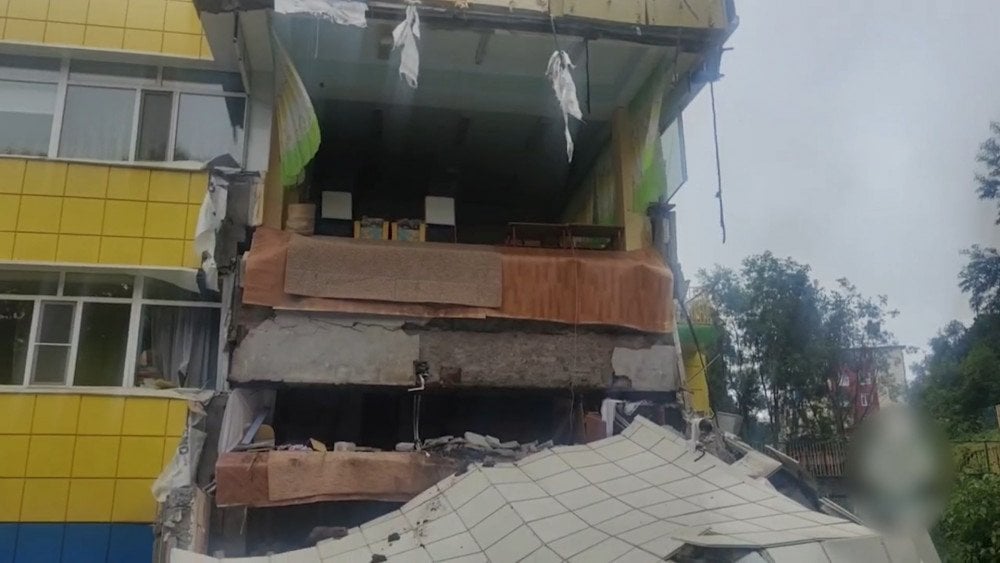
Aftermath of strong earthquakes in Russia’s Kamchatka: in Yelizovsky District, the wall of a kindergarten collapsed
According to the Ministry of Health, there were injuries: some people sustained injuries while running out of buildings, and others jumped out of windows. The number of ambulance calls sharply increased: people reported spikes in blood pressure, arrhythmia, epileptic seizures, and panic attacks.
As of July 31, in the 24 hours following the main shock, about 1,000 aftershocks with magnitudes up to 6.7 were recorded.
The tremors followed one after another, with intervals of just a few minutes.
More than 5,000 people were evacuated to safe zones.
Tsunami warnings were issued almost immediately. In the Yelizovsky District of Kamchatka Krai, wave heights reached 3–4 m (9.8–13.1 ft), and in the Kuril Islands — up to 5 m (16.4 ft). In the city of Severo-Kurilsk, the water penetrated 200 m (656 ft) inland, flooding the port and causing damage to fishing industry enterprises. A scientific expedition camp on Shumshu Island was also flooded.
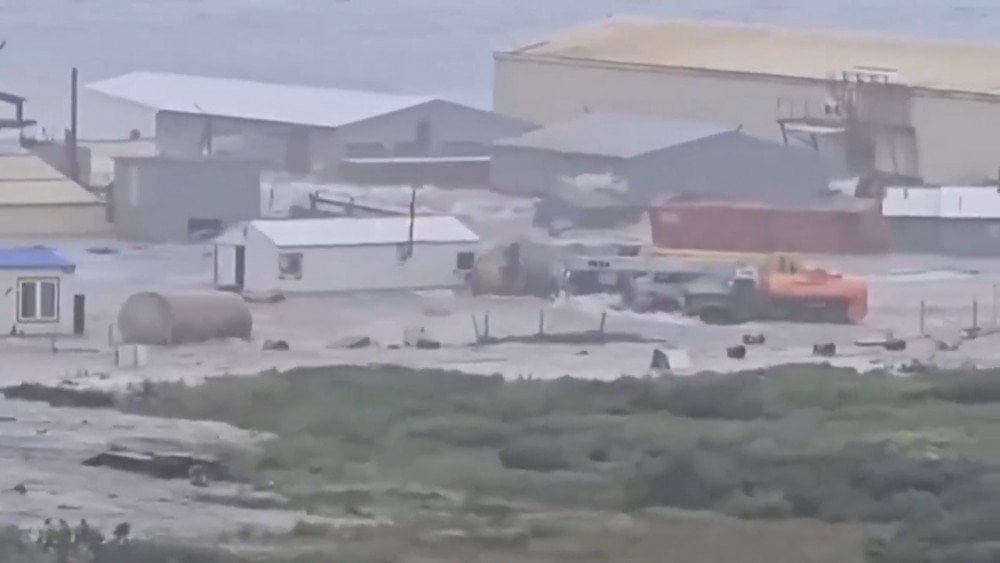
Flooded fish processing factory after strong earthquake in Kamchatka, Severo-Kurilsk, Paramushir Island, Russia
Tsunami threats were announced in many countries of the Pacific region, including Japan, China, the USA, Indonesia, Chile, Peru, and Ecuador.
Wave heights reached about 1.3 m (4.3 ft) in Japan’s Hokkaido Prefecture, up to 1.7 m (5.6 ft) in Hawaii, USA, and 30–40 cm (11.8–15.7 in) along the coasts of Chile and Peru.
Urgent evacuations began from low-lying coastal zones.
In Japan, about 2,000,000 people were forced to leave potentially dangerous areas. Train services were suspended, and Sendai Airport was temporarily closed.
Authorities in Chile conducted one of the largest evacuations in the country’s history: according to the Ministry of Internal Affairs, 1,400,000 people were moved to higher ground.
In Hawaii, multi-kilometer traffic jams formed, harbors were closed, and flights were canceled.
In the USA, waves reached the shores of Washington, California, Oregon, and Alaska.
At the same time, Russia’s Klyuchevskoy Volcano erupted. Scorching lava poured down its western slope, while bright glows flared above the crater, accompanied by explosions.
Kamchatka volcanologists link Klyuchevskoy’s activation to the earthquake.
Singapore
On July 26, on a busy street in Singapore’s Tanjong Katong area, a massive sinkhole suddenly formed, swallowing a moving car. The vehicle almost completely disappeared underground, and the hole quickly filled with water.
The collapse affected two lanes of the road and damaged two water mains. The car was extracted from the sinkhole with the help of a crane. The female driver, who was in a state of shock, was taken to the hospital.

Giant sinkhole on a street in Singapore swallows a car
Philippines
The Philippines had not yet recovered from the aftermath of Typhoon Wipha when another tropical storm — Co-may (local name — Emong) — struck the country.
On the evening of July 24, having already intensified into a typhoon, it slammed into the city of Agno in Pangasinan Province with wind gusts of up to 165 km/h (102.5 mph). Seasonal rains that had begun earlier had already caused widespread flooding, and the storm’s impact only worsened the situation.
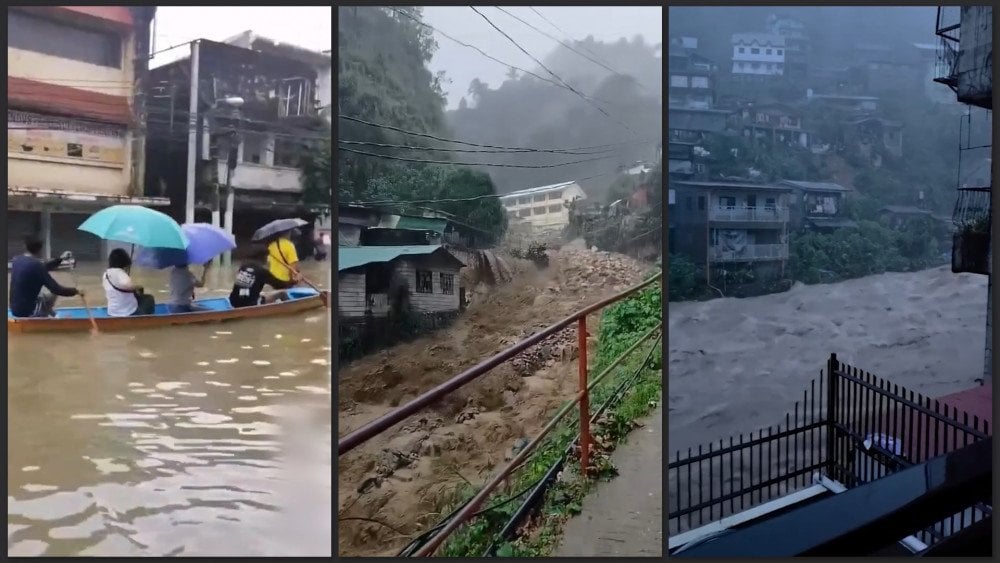
Destructive flooding in the Philippines caused by Tropical Storm Co-may
According to official data, 278,000 people were evacuated, and about 3,000 houses were damaged. In the northern provinces, sea and air transport was disrupted, and schools — including in the capital, Manila — were closed. More than 80 cities declared a state of emergency.
Kazakhstan
On July 25, a powerful storm with torrential rain and hurricane-force winds struck Astana, the capital of Kazakhstan.
The disaster hit suddenly: streets were quickly flooded, wind uprooted trees, tore down billboards, building facades, and poorly secured structures. Pedestrians were literally knocked off their feet. In some districts, power outages occurred. In one of the city’s districts, a concrete slab collapsed onto a parked car.
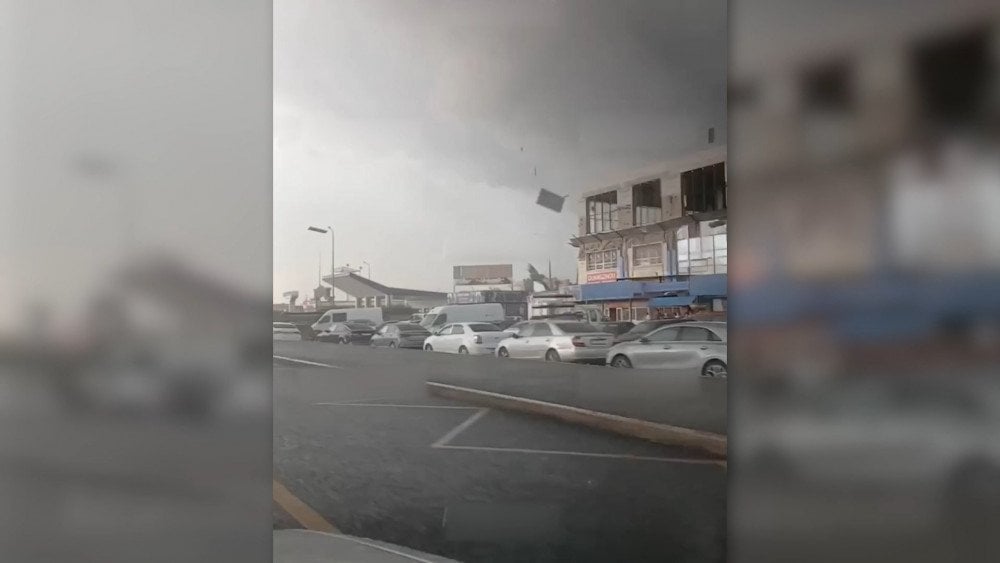
Powerful storm strikes Astana, Kazakhstan
Russia
On July 23, after an exhausting heat of around +40 °C (104 °F), a powerful storm struck the Volgograd Region.
The city of Volzhsky was hit particularly hard. It all happened suddenly: the sky darkened within minutes, and then the disaster unleashed its full force. Gale-force winds tore roofs off houses, uprooted trees, destroyed bus stops, and toppled power transmission poles.
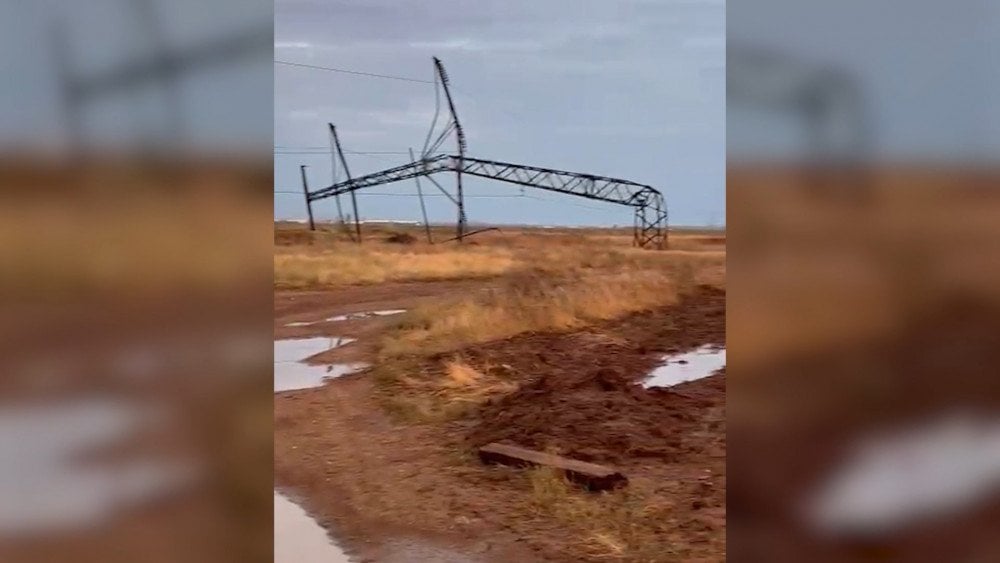
Powerful storm damaged a high-voltage power transmission pole in Volzhsky, Volgograd Region, Russia
The city was left without drinking water as the water intake facility lost power. It turned out that there was neither a backup power source nor any emergency action plan in place for such situations.
In the river port, the storm overturned a loading crane, and boats and motorboats were thrown ashore.
Rural areas were also affected — in some settlements, large hail fell, damaging crops.
Belarus
Starting on July 24, the Vitebsk Region of Belarus was hit by heavy downpours.
Intense rainfall damaged several roads and flooded garden plots. A video widely shared on social media showed people standing knee-deep in water, trying to save their crops.
On flooded streets in the city of Vitebsk, fish were spotted that had swum in from an overflowing reservoir.
On July 26, due to a strong flow of water, part of the bank of the Western Dvina River collapsed — a landslide occurred in the Verkhovye neighborhood of Vitebsk.
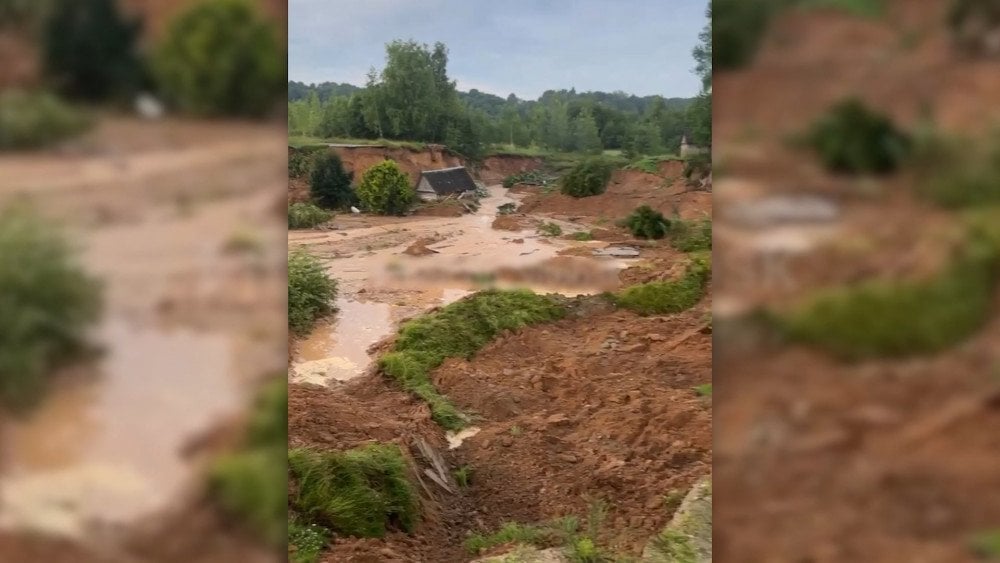
Heavy downpours caused a riverbank collapse on the Western Dvina River in Vitebsk, Belarus
A section of land about one hectare (2.47 acres) in size slid into the river, destroying seven outbuildings and a service road. Fortunately, there were no casualties.
Germany
On July 27, severe storms swept across southern Germany. In some areas of Bavaria, including Nuremberg, up to 100 mm (3.9 in) of rain fell within 24 hours. In some streets, water reached heights of up to 50 cm (1.6 ft), and in one underground parking garage, levels rose to one meter (3.3 ft).

Heavy rain flooded the streets of Nuremberg, Bavaria, Germany
Near the town of Riedlingen in Baden-Württemberg, a regional express train carrying about 100 passengers derailed. The rescue operation continued throughout the night. Hundreds of specialists, helicopters, evacuation equipment, and canine units with dogs worked at the scene.
As a result of the disaster, three people died, and at least 40 others were injured and taken to hospitals. According to preliminary data, the cause of the train crash was a landslide that descended onto the tracks due to heavy rainfall: within one hour, up to 50 mm (1.97 in) of precipitation fell in this area.
Rail traffic on this section of the route was completely halted for an indefinite period.
Fires
Europe has been gripped by extreme heat. Temperatures in Türkiye reached a record 50.5 °C (122.9 °F), and in Greece — over 42 °C (107.6 °F). Dry air and strong winds created perfect conditions for large-scale wildfires. In several countries, the highest danger level was declared, and thousands of people were evacuated.
On July 24, in central Türkiye, in the rural district of Seyitgazi, Eskişehir Province, a forest fire broke out.
A group of 24 people — forestry workers and rescuers — were attempting to contain the blaze by creating firebreaks when the wind suddenly shifted direction. Ten people were trapped in a deadly situation. Sadly, they died. Fourteen others managed to escape, many of them with burns and injuries.
On July 26, fires broke out in Antalya, where flames approached high-rise residential buildings that in summer months are frequented by both locals and foreign tourists. Residents of one suburb were urgently evacuated, and a key coastal road was closed.
On July 28, a dangerous situation developed in the Bursa area — the fourth-largest city in the country. The fire swept through hilly terrain around the city, destroying about 3,000 ha (7,413 acres) of land. More than 1,700 people were evacuated from suburbs and several nearby villages. The highway connecting the city to the capital, Ankara, was closed.
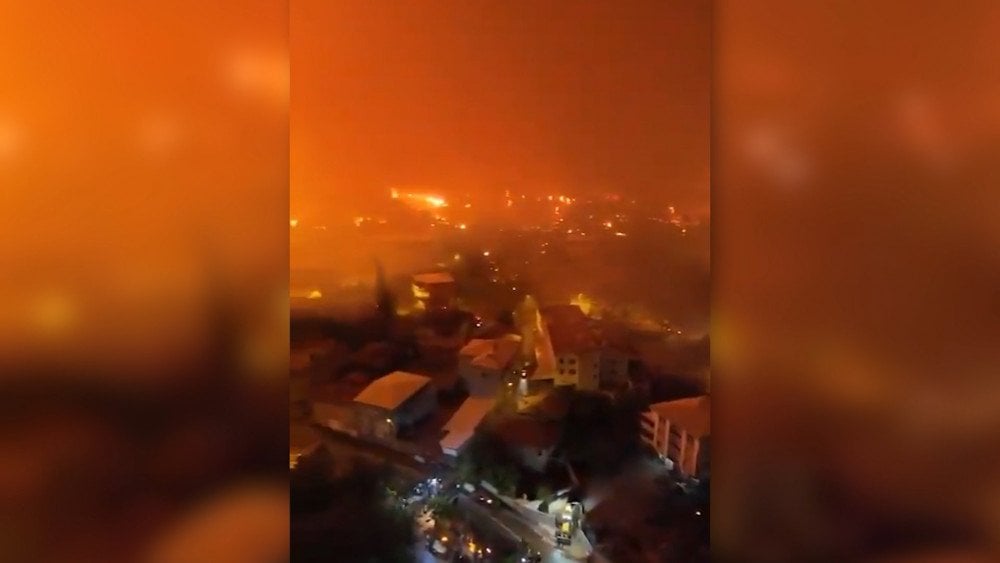
A forest fire rages near the Turkish city of Bursa, threatening residential areas
In those days, firefighting efforts were also underway in the provinces of Adana, Mersin, and Karabük. İzmir and Bilecik Provinces were declared disaster zones.
In total, more than 3,000 fires have been recorded in the country this summer, with at least 17 fatalities. Across the country, 25,000 rescuers are battling the flames.
On July 26, the wildfire situation in Greece sharply worsened — flames engulfed 55,540 ha (137,239 acres).
About 20 % of Kythera Island’s territory burned that day.
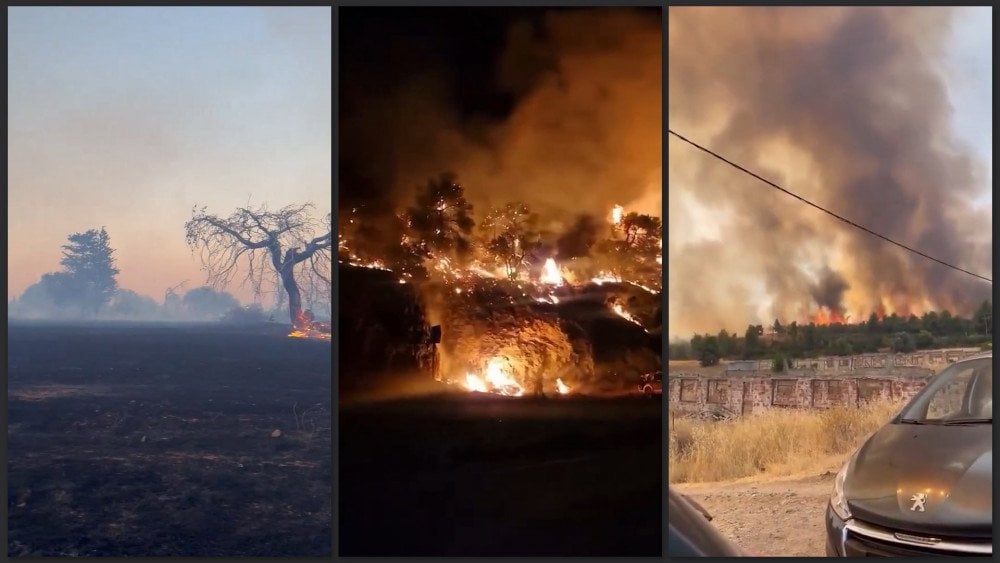
Greece suffers from destructive wildfires
In some areas of Central Euboea, the fire destroyed farms — thousands of animals perished. The blaze spread so quickly that owners had no time to save them. The disaster led to power and water supply outages. Six firefighters were hospitalized.
In the Chania region on Crete, due to heat and strong winds exceeding 75 km/h (46.6 mph), the fire rapidly spread from one village to another.
Residents of seven settlements were evacuated. Beekeepers suffered major losses — about 2,000 beehives were destroyed by the flames.
On July 27, in Italian Sardinia, 27 forest fires ignited simultaneously. Flames swept through Punta Molentis Beach — one of the island’s most picturesque spots, famous for its turquoise waters and white sand. Dozens of cars burned in parking areas. The fire cut off all land evacuation routes for 102 people, including 12 children. Evacuations were carried out by sea.

Aftermath of a wildfire — burned cars in the parking area of Punta Molentis Beach, Sardinia, Italy
On July 27, Bulgaria also faced unprecedented wildfires, engulfing nearly 100 settlements. The fire destroyed homes and thousands of hectares of forest, forcing residents to evacuate. Strong winds complicated firefighting efforts, forcing crews to withdraw. Authorities appealed to the EU for assistance. One volunteer described the situation as “a merciless tragedy.”
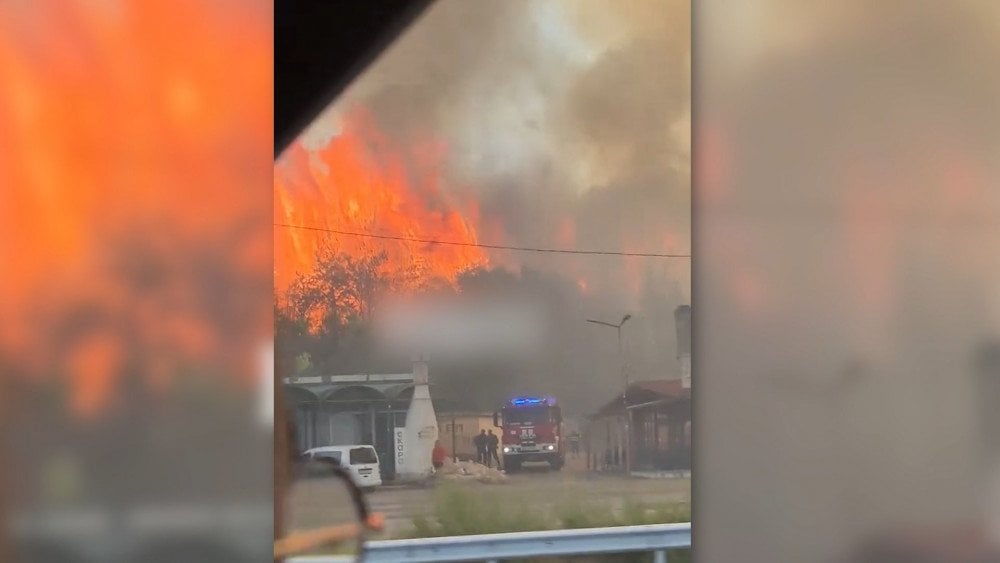
Catastrophic wildfire in Bulgaria destroys forests and threatens settlements
In Portugal, more than 50 active fire hotspots were registered, and almost the entire country declared a red wildfire danger level. The most affected areas: Arouca (Aveiro District), Ponte da Barca (Viana do Castelo District), and Penamacor (Castelo Branco District).
In the Alcanede area, Santarém District, fire struck a livestock farm, killing hundreds of animals.
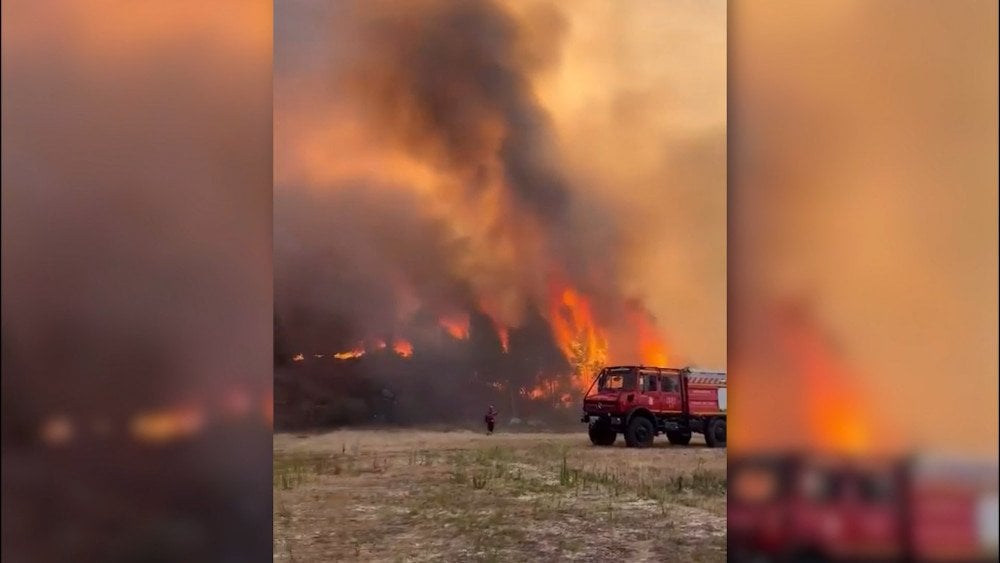
Fiery storm in Portugal — rescuers battle wildfires
About 3,000 firefighters, over 600 units of equipment, and more than 12 aircraft took part in firefighting efforts.
Massive wildfires have also swept across Spain, Montenegro, Albania, and several other European countries.
From January 1 to July 29, 2025, 292,855 ha (723,831 acres) have already burned in Europe — nearly twice the average for the same period over the past 19 years.
According to a European Commission expert, days with extreme wildfire danger have already reached levels expected only by 2050: experts’ forecasts have proved wrong — changes on the planet are unfolding much faster.
Last week’s natural disasters only confirm one thing: the Earth is entering a new phase of heightened seismic activity. And unfortunately, catastrophic earthquakes are now unavoidable. This is not an exaggeration or panic — it is a conclusion based on clearly traceable geodynamic trends that can no longer be ignored.
In the past, strong earthquakes were isolated events; now there is a distinctly exponential growth in their number. And the steady increase in earthquakes with magnitudes of 6.0 and higher is a very alarming signal. Their destructive force is not the only threat. We are approaching a critical threshold: the next stage will be an increase in the frequency of magnitude 7.0 earthquakes. Once such events begin occurring regularly, it will be too late to change anything.
Many may ask: what can actually be done? How can we influence earthquakes? Briefly, for those who have not followed previous issues:
The increase in seismic activity indicates that the Earth’s crust is under tremendous internal pressure. Reducing this pressure would relieve stress in the crust and decrease its deformation, which could significantly reduce the number of destructive earthquakes. This can be achieved through controlled degassing and the partial release of magma from the interior — specifically in the area where the Siberian magmatic plume is already rising.
The plume is currently in a critical phase. Timely degassing, therefore, could not only prevent a plume breakthrough but also help stabilize the planet’s seismic activity.
At present, no alternative solutions have been proposed other than the one put forward by the ALLATRA scientific community.
The climate and geodynamic forecast they made many years ago is now fully confirmed, because their conclusions are based on a comprehensive geodynamic model that takes into account as many factors as possible.
Some might think we are trying to scare people. But we are actually the first to hope that this scenario never becomes reality.
However, given the current rise in seismic activity, the window of time when planned degassing can still help is rapidly closing.
At the later stages of the crisis, it will no longer stabilize the situation; on the contrary, it could trigger a disaster.
We cannot allow millions of people to die simply because we failed to reach those who believe a tragedy won’t touch them. This catastrophe will affect everyone without exception. Even if someone doesn’t care about what’s happening in the world, they cannot be indifferent to their own life and the future of their children.
If you value your life, do not remain silent. Do not shift responsibility to politicians who you think should eliminate a planetary threat. While you do nothing, they do nothing as well — because they are just like you.
We believe that there are still many among us who are ready not only to watch and listen, but also to think, understand, and pass on this knowledge.
This is especially important now, as there is almost no time left for reflection.
You can watch the video version of this article here:
Leave a comment